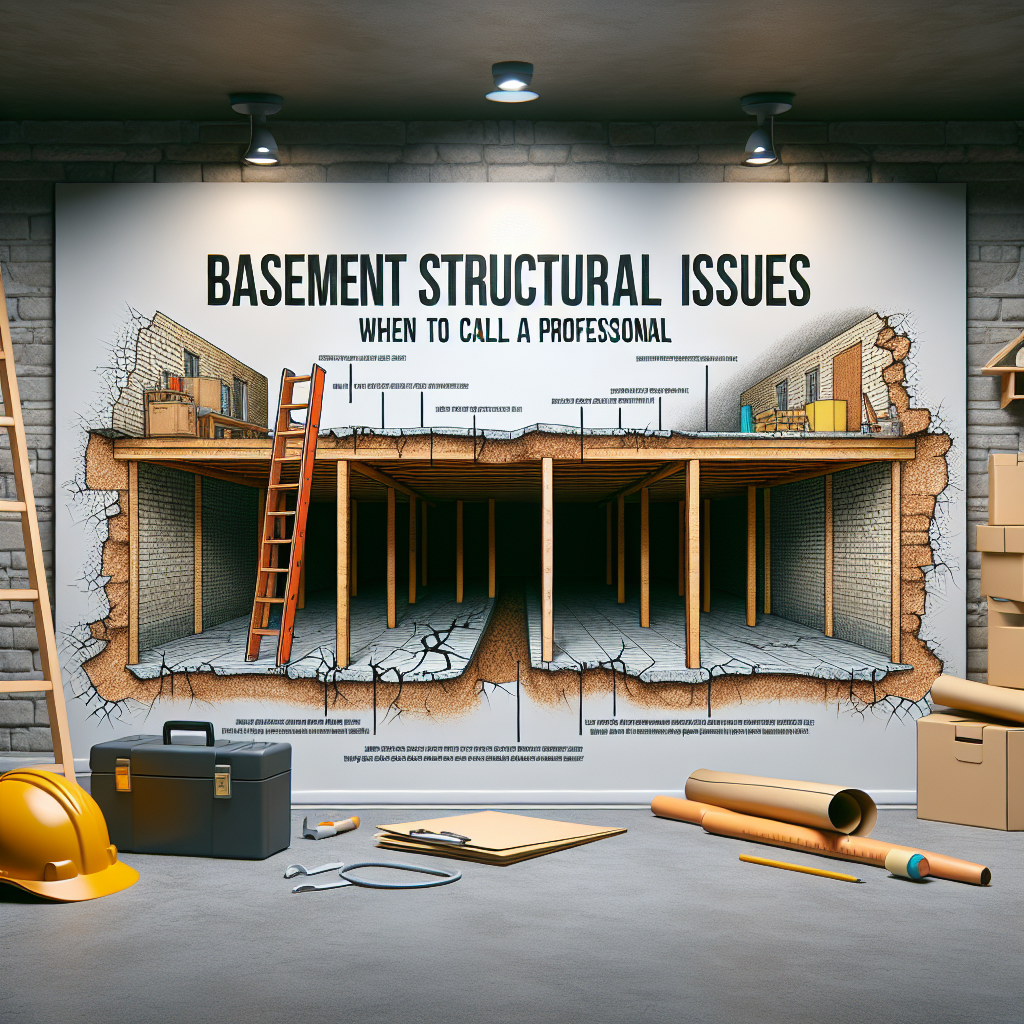Basements are often seen as the unsung heroes of a home — providing extra storage space, a place for laundry, or even a cozy family room. However, like any other part of your home, basements are vulnerable to structural issues. Ignoring these can lead to more significant problems down the road. In this guide, we will explore common basement structural issues, signs to watch for, and when to call a professional.
The Importance of Basements in Home Design
Before we dive into structural issues, it’s essential to understand why basements play a vital role in home design. They can enhance your living space and add value to your property. A well-constructed and maintained basement can offer a variety of functions:
- Storage Solutions: A place to keep seasonal items, appliances, and even family memorabilia.
- Living Space: Many homeowners transform basements into additional living areas, such as guest rooms or entertainment zones.
- Utility Access: Your plumbing, electrical systems, and heating equipment often reside in the basement for easy access.
However, a poorly maintained basement can lead to severe structural and safety issues down the road.
Common Basement Structural Issues
1. Cracks in the Walls and Floor
Cracks in your basement walls or floors can be concerning and are often the first sign of structural issues. While small hairline cracks may merely be cosmetic, wider or deeper cracks can indicate more serious problems, such as foundation settling or soil movement. It’s essential to monitor these cracks over time; if they widen, it could be time to consult a professional.
2. Water Intrusion and Moisture Problems
Basements are often susceptible to moisture issues. Signs of water intrusion can range from damp spots on walls to pooling water on the floor. Excessive moisture can lead to mold growth, rot, and ultimately compromise the structural integrity of your home. If you notice persistent moisture, it’s crucial to address it promptly.
3. Bowing Walls
Bowing walls are a significant indicator of pressure from the outside soil and can compromise the stability of your basement. Signs of bowing include walls that appear to be slanted or bulging inward. If you observe this alarming issue, immediate professional assessment is necessary.
4. Uneven or Sloping Floors
If you notice your basement floors aren’t level or have dips and slopes, it could signal foundation settlement or other serious structural issues. Uneven floors are often the result of shifting soil under your home, and addressing this early can prevent more extensive repairs down the line.
5. Mold and Mildew
The presence of mold and mildew in your basement can pose health risks and potential structural damage. If you notice a musty smell or any signs of mold growth, it may be related to underlying moisture issues. Mold can easily spread and worsen over time, making it imperative to act fast.
Signs You Need to Call a Professional
Not all issues require immediate professional intervention, but the following signs should prompt you to seek expert advice:
- Rapidly Expanding Cracks: If cracks are developing quickly or appear more severe than before.
- Persistent Water Issues: Continuous water intrusion may require drainage solutions.
- Bowing Walls: If your walls are bowing or leaning, this is a structural concern.
- Severe Mold Growth: If mold appears in significant quantities, it’s time to consult experts not only for mold remediation but also for the cause.
- Foundation Shifts: Any noticeable shifts or movement in your foundation should be evaluated by professionals.
Finding the Right Professional
When seeking a professional, do your research. Look for qualified structural engineers or licensed contractors with expertise in basement construction and repair. Ask for references, read reviews, and ensure they are licensed and insured. Having a knowledgeable professional assess your situation can provide peace of mind and ensure your home remains safe and structurally sound.
Conclusion
Basement structural issues can seem daunting, but with the right knowledge and timely intervention, you can protect your home investment. Keep an open eye on the signs discussed, and don’t hesitate to seek professional help when necessary. Remember, your basement is more than just an extra space — it’s a critical component of your home’s structure. Don’t let small issues escalate into major problems; act swiftly and ensure your home remains a safe haven for you and your loved ones.
By staying informed and proactive, you’ll not only enhance the functionality of your basement but also preserve the overall integrity of your home.


